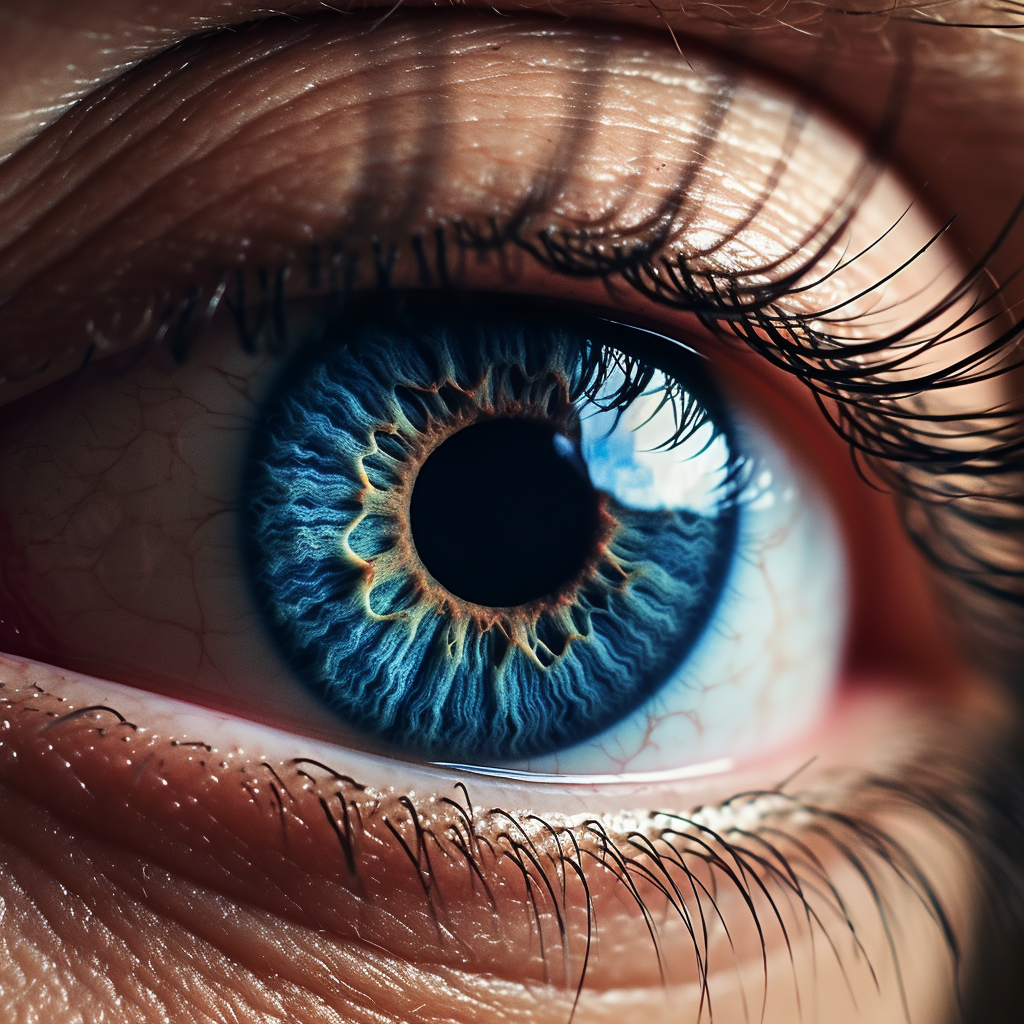Iridology: Another Alternative Medicine Scam

Remember that prank where you would tell someone that you could tell if someone had cancer if their hand was bigger than their face? And then you'd smack their hand into their face when they tried to compare the two? Now imagine that someone told you that looking at your eye color could tell them if you had a broken foot. Sounds crazy, right?
Iridology is the process employed by some alternative-medicine practitioners who attempt to divine medical problems by staring at your eyes. They have developed this into a full pseudo-science with training schools and "certification" programs.
Where chiropractors claim that all diseases can be traced back to skeletal "imbalances," iridologists believe that all diseases and ailments can be detected by observing the iris. Iridologists believe the oculomotor nerve changes the iris to indicate disease and infirmity. They believe that the health of every organ can be determined by examining the color, shape, tint, and depth of fibers that make up the iris.
They say that the eyes are the gateways to the soul. Well, these guys take that a bit too literally.

Iridologists generally believe that a dark eye area indicates a loss of nerve activity in that region. Oh, I should mention that the eye is divided radially into sections that indicate each major body area. How they came up with each slice, I have no idea. If dark areas mean loss of nerve activity, light areas mean more activity, such as pain.
Here's the biggest problem with all of that:
The iris doesn't change a whole lot from birth until death. There's enough variation over a decade to make biometric scanners a little iffy. Still, there's no change detectable on the timescale that iridologists would need to give any credibility to their "profession."
Here's another major problem:
There is no evolutionary reason for the oculomotor nerve to be connected to every organ in the way that iridologists believe. It just doesn't make sense. Any college anatomy class would show that this isn't the case.
How do iridologists even exist?
Part of the reason is that as there is no government licensing authority, there's no burden of proof that their practices are effective. There are no blood tests to confirm diagnoses. Iridologists don't boast of successful clinical trials because there are none. Unfortunately, anyone can claim anything so long as there is a disclaimer that they're not legally allowed to diagnose or treat an illness.
The final nail in the coffin: Procedural problems that would invalidate every test iridologists perform regardless of the lack of science behind the test.
For a test to be valid, it must be performed the same way using accurately calibrated equipment every time.
Iridologists typically conduct examinations using a penlight and their own personal judgment. No real tests. No records. Just looking at you. Only some use video recording equipment. In the examination room, the iridologist passes a penlight across the field of vision of the patient. As the penlight is passed at a different angle and varying distances during each visit, a slightly different image of the iris will be recorded each time. This promotes confirmation bias to take over in suggesting some change in the iris compared to the last visit.
On top of that, using a different penlight or the same penlight at a different battery charge level will change the hue of light being cast, changing the exact iris color. That means different test results every time. The iridologists that use actual recording equipment will likely not place it at the same distance each time which also means a different iris illumination will be recorded. If all of that doesn't confound the "test" enough, room lighting can drastically change the close-up appearance of an iris from room to room.
One former iridologist described his disillusionment with his profession after he developed a mounted camera and lighting system. He discovered the truth that a basic anatomy class would have told him long ago: irises don't change. After correcting for all of the previously mentioned variables, individual iris pictures taken over time appeared to be identical regardless of the current health of the individual. After a long moral quandary, he quit his practice and began working towards a medical degree. Many (if not most) alternative-medicine practitioners do want to help people. Unfortunately, they went down the wrong path at some point.
"But my alternative-medicine practitioner diagnosed me correctly!"
This is where cold reading comes in. Cold reading is the process psychics and con-men use to divine information about an individual based on verbal and non-verbal cues. If a 20-year pack-a-day smoker comes in complaining of shortness of breath, constant coughing, bloody spittle, and general weakness, there is a fair chance that they have lung cancer. It doesn't take a doctor to guess what symptoms mean, but it does take a doctor to diagnose a problem and prescribe a remedy correctly.
Therein lies the true danger of these alternative-medicine practitioners: Not getting the right medicine for a real problem. They can drain your wallet all day long without it mattering that much. However, when you cross over from eating herbs for "wellness" and into "trying to cure cancer with grass clippings," real harm is being done. Because of taking a charlatan's word for the correct course of treatment, real people die every day.
Ok, is there any truth to Iridology at all?
Nope. Numerous studies have shown iridologists perform no better than random chance at determining healthy and sick patients.
Have any stories? Leave a comment.





Member discussion